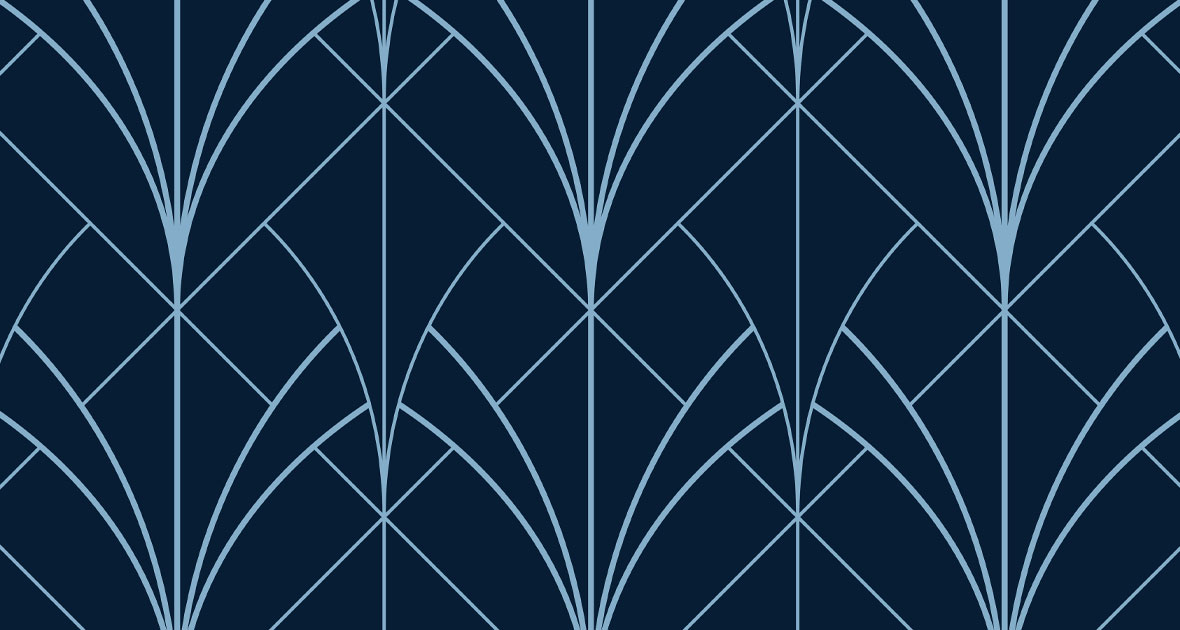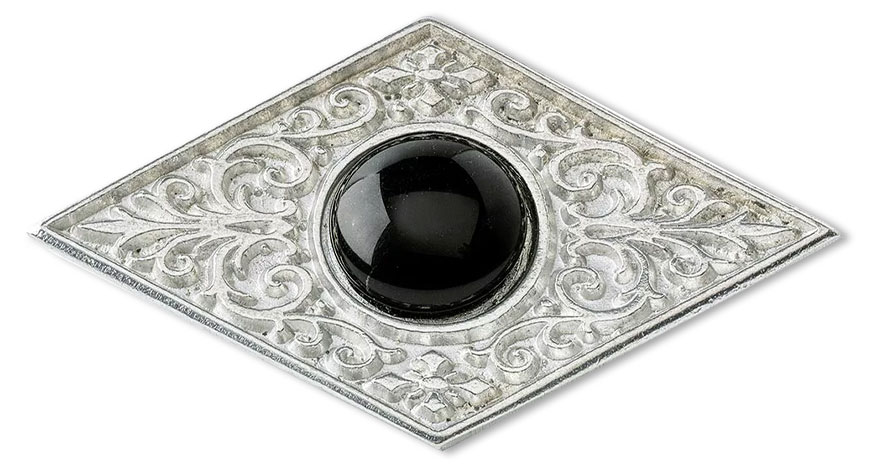
Art Deco Jewellery - The Rise of Modernity
During the economic boom of the roaring 1920s, a new art movement reached its peak - Art Deco. This movement, which impresses with clear lines, geometric shapes and strong contrasts, influenced many areas such as design, fine arts and architecture, but above all, the jewellery industry.
Due to the economic upswing, there was an increasing interest in luxury goods, so jewellery in the Art Deco style became a symbol of wealth and prestige. A variety of unique and sophisticated Art Deco necklaces, bracelets and other pieces of jewellery emerged that are still admired and worn today.
The Emergence of the Art Deco Style Epoch
The roots of Art Deco go back to the Paris World Fair "Exposition Internationale des Arts Décoratifs et Industriels Modernes" in 1925. This momentous event in the art and design world brought the latest trends and technologies to the market. The Art Deco style was ubiquitous at the World Fair and impressed visitors with its elegant and sophisticated designs. Thus, the art movement replaced the ornamental, floral and nature-inspired Art Nouveau.
Tamara de Lempicka, André Groult and John Wade are among the most important representatives of Art Deco. In the field of Art Deco jewellery, some influential jewellery designers perfectly implemented the geometry and clear lines in Art Deco bracelets, necklaces and other pieces of jewellery. For example, the renowned jewellery brand Cartier was a pioneer of the Art Deco style in jewellery design in the 1920s.
Pioneers of Art Deco Jewellery
Art Deco jewellery from Cartier at that time is characterised by the use of coloured stones such as sapphires, rubies and emeralds, as well as, by the use of platinum and diamonds. The French jewellery brand Boucheron was also successful in the production of Art Deco jewellery design in the 1920s. Boucheron was particularly popular due to the innovative use of geometric shapes and patterns.
Another luxurious jewellery brand that was very successful in the 1920s was Van Cleef & Arpels. The jewellery from this period is particularly well-known for its artistic processing of coloured gemstones, pearls and diamonds to give the jewellery pieces even more sparkle and glamour.

Characteristics of Art Deco Jewellery
The typical shapes of jewellery in the Art Deco style are rectangular, trapezoidal stones, triangular and diamond-shaped elements. Circles and semicircles, geometric shapes such as arrows, fans and zigzag lines as well as abstract patterns such as sunrays, lightning and circles with rays are also frequently found.
Furthermore, the use of clear lines and geometric shapes, often enhanced by symmetry and repetition of patterns, is another characteristic of Art Deco jewellery. Strong contrasts, such as black and white combinations, giving the jewellery a powerful and dynamic radiance, are also characteristic features.
Art Deco received inspiration from current archaeological excavations of Egyptian, Aztec, Roman-Greek and Babylonian art. An important influence was the discovery of Tutankhamun's tomb in 1922. This discovery brought back interest in Egyptian design and aesthetics and inspired jewellery designers to integrate Egyptian motifs and symbols into their jewellery pieces.
Jewellery Made from Precious Materials
Art Deco jewellery designers paid special attention to the preciousness of the materials used. Precious metals such as platinum, due to their resistance and durability, white gold and silver were particularly popular. Gemstones such as diamonds, which perfectly matched the clean lines and geometric shapes, and emeralds, rubies and sapphires, which added the desired colour and contrast, were frequently used in the jewellery.
Special Innovations in Jewellery Design
One of these innovations was flexible bracelets, which were first created by the jewellery company Cartier as a pioneer. There was a high demand for elaborate bracelets. Thus, the flexible bracelet often came in a wide, bulky design, adorned with numerous diamonds and other precious stones.
However, bangles also became a fashionable item during the Art Deco style epoch. Probably the most famous bangles of this epoch were the platinum and diamond bangles that Cartier made for the actress Gloria Swanson. She wore the Art Deco bangles in the film "Sunset Boulevard", in advertising photos for the film and at an Oscar ceremony. The bangles are still popular pieces of Art Deco jewellery today.
Sautoir Necklace - An Icon of Art Deco Jewellery
However, probably the most iconic piece of Art Deco jewellery is the Sautoir necklace. The French term describes a very long Art Deco jewellery necklace that is particularly elegant as well as sensual, often swinging to the waist. Much of the Art Deco jewellery was versatile, and sautoir necklaces are no exception. They were often converted into bracelets, shorter necklaces or even headdresses. Even today, the necklace is a special and popular classic.
